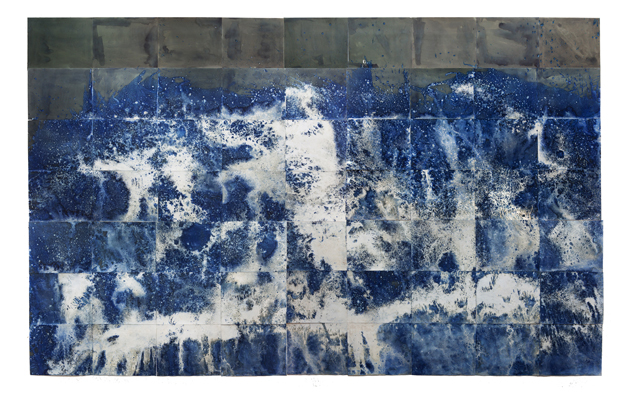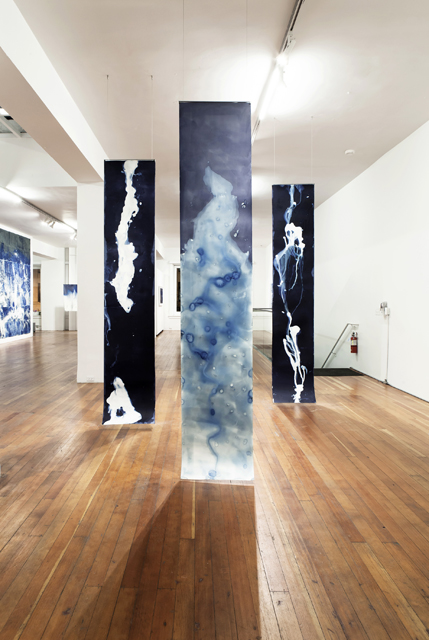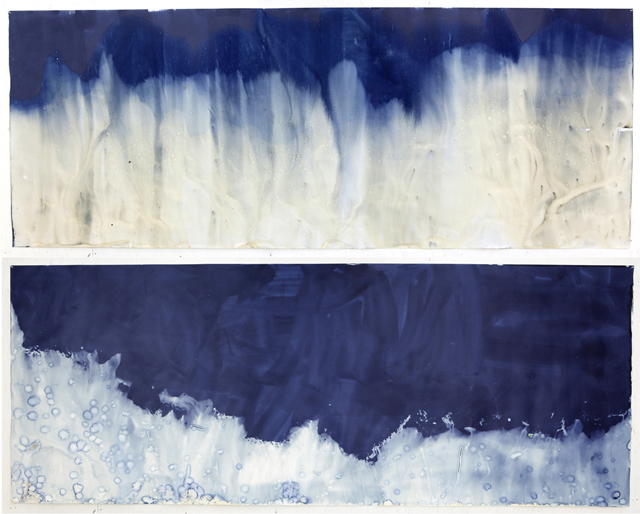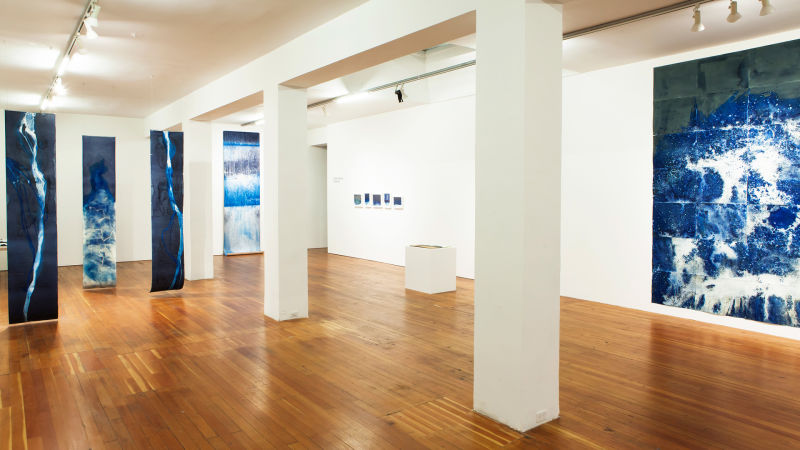Photographer Meghann Riepenhoff makes her San Francisco debut with Littoral Drift, a gorgeous installation of cyanotypes now on view at SF Camerawork. The exhibition explores intriguing ideas of permanence (both photographic and geologic), mutability and how failure can produce the most magical outcomes.

Riepenhoff lays sheets of chemically-treated paper on ocean shores — she’s worked along the Pacific and Atlantic coasts from Sausalito to South Carolina to Washington’s Bainbridge Island — and secures the pages with rocks, branches or sand, whatever’s on hand. The water seeps, falls or crashes onto the paper and mixes with available sunlight to activate the photosensitive chemicals of the cyanotype. These waves are part of “littoral drift,” an ecological term that describes the movement of sand and silt along a shoreline.
The direct positive prints Riepenhoff creates without a camera were long-ago named for their luxurious cyan-blue. That deep hue and its tonal variations — pale blue, gray and an acrid yellow captured at Mono Lake — are all chemical responses to pH levels and and other impurities found in the water. While the process was discovered in 1842 by English polymath Sir John Herschel, one of the most celebrated cyanotype practitioners was Anna Atkins, a 19th-century botanist and photographer. Atkins brought scientific illustration into the realm of visual art, challenging male domination of both fields. Like her predecessor, Meghann Riepenhoff’s work is fueled by an irrepressible curiosity about the natural world.

Littoral Drift Nearshore #209 (2015), a mammoth grid of 63 sheets of paper, anchors the exhibition at SF Camerawork. From a distance, the installation reads as an overhead view of turbulent blue waters topped by whitecaps. As you get closer to the grid, those whitecaps turn out to be the points where ocean waves crashed so hard onto the paper that the emulsion was literally blasted away. In contrast to the elegant vertical diptych Littoral Drift #216 (2015), which captures a gentle tidal stream on Bainbridge Island, the gridded piece demonstrates the unmistakable power and violent potential of water.
The exhibition is generously organized, with ample space between prints allowing the viewer to observe the surface of each object. Up close, salt crystals blossom as the treated paper continues to interact with residual elements of the seawater. On some pieces, sand and trace sediments give the print surfaces a granular appearance. A group of small, framed pieces stand out from other works hung with minimally visible hardware. These simple installation choices enhance the presentation of each piece, and beautifully offset the physically demanding aspect of Riepenhoff’s practice, which includes wading into water to retrieve giant sheets of paper that have been pulled from her hands by unpredictable tides.

When kept in darkness, blue portions of a cyanotype grow darker, something that is already happening to the pieces at SF Camerawork. As Riepenhoff notes in the interview with Pier 24 Associate Director Allie Haeusslein that is featured in the exhibition catalog, the life cycle of cyanotypes beautifully refute ideas of photographic permanence, the idea that any moment can be “caught” on film and affixed permanently.


